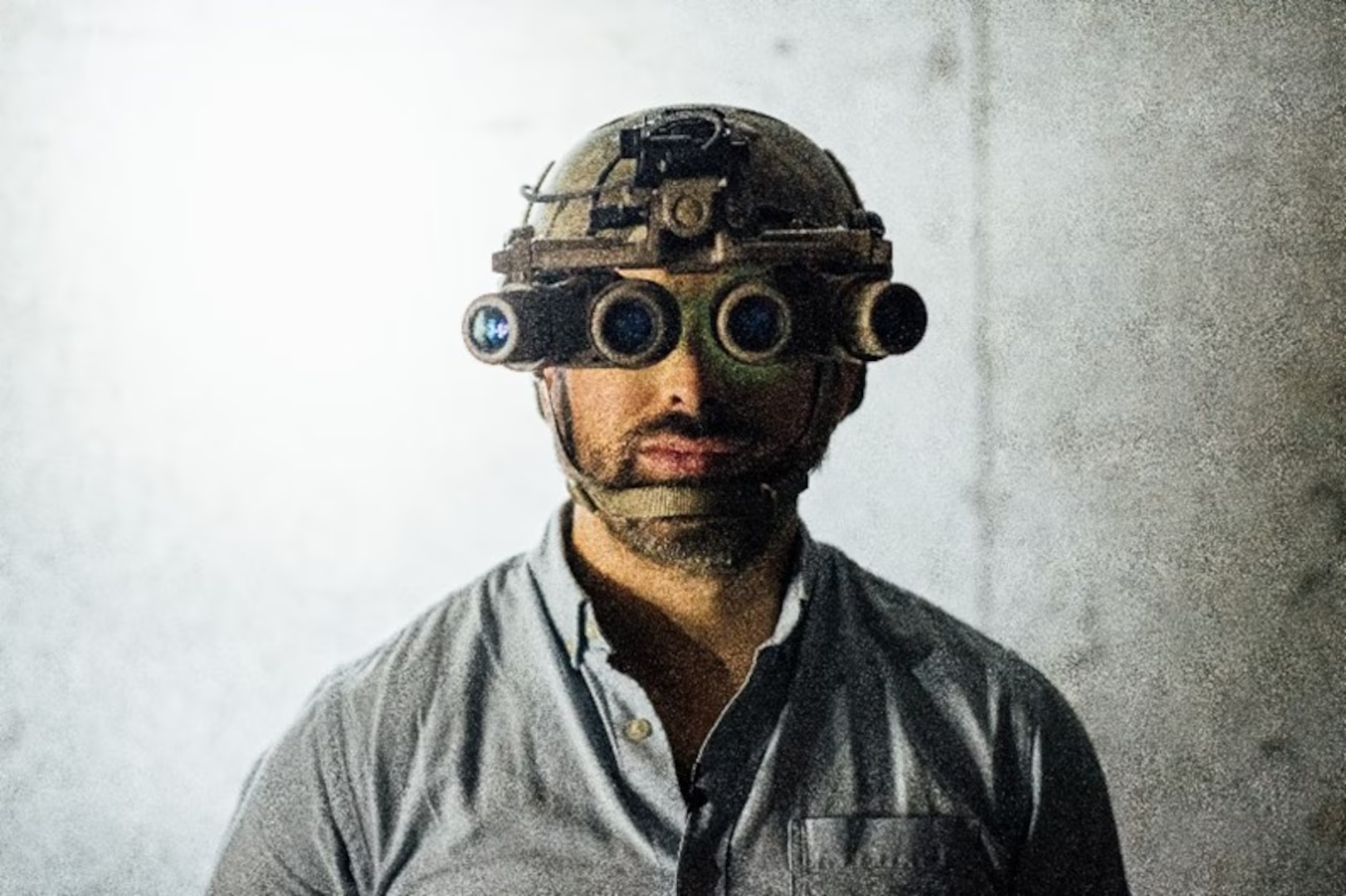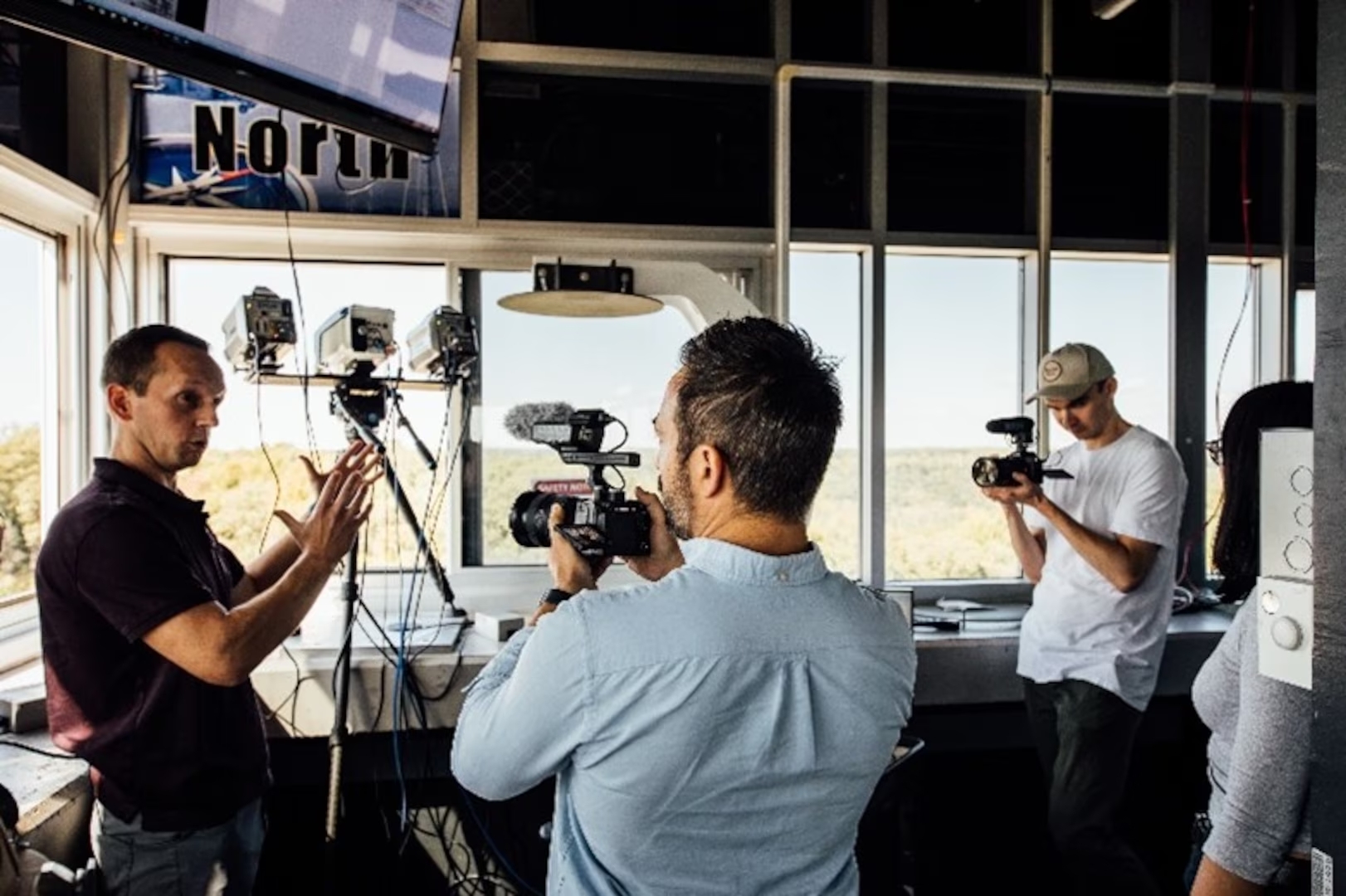Carol Johnson, Southern Indiana Business Report
CRANE – For more than 40 years, Naval Surface Warfare Center, Crane Division (NSWC Crane) has played an integral role in night vision technology and testing in support of the warfighter with little fanfare, that is until a YouTube science channel put the program in the spotlight.
Since the video was released Nov. 4 by Veritasium, the segment has had more than 3.7 million views.

Veritasium creator and host Derek Muller spent time at Crane learning about Crane’s night vision program, which is directed by Dr. Benjamin Conley, the Senior Scientist and Technology Manager (SSTM) for EO/IR sensing at NSWC Crane.
Veritasium is a science, math, physics and history channel. Muller takes viewers inside the technology, giving them a science lesson as well as a demonstration of the goggles in the total darkness testing facility at Crane.
During the informative and, sometimes entertaining, piece, Muller attempts to drive around traffic cones and catch a Frisbee, first while wearing commercial grade goggles and later wearing military grade goggles. There’s little doubt about the superior performance of the military grade goggles as viewers watch Muller fumble to catch a Frisbee and flatten cones.
Tech for the warfighter
The United States Army started developing night vision technology after World War II. Conley said Crane became involved in designing the mounts and handling repairs for the Starlight Scope goggles in the late 1960 and early 1970s. Crane has continued to advance its program in support of the warfighter’s need for high grade night vision capabilities.
Today, NSWC Crane evaluates and repairs, performs certification and calibration tests, and develops new technology for next generation night vision goggles used by our military.
“We are the technical point of contact for our fleet,” Conley said. “When the fleet needs to buy, repair or certify night vision devices, they usually come to Crane. We have labs, and significant engineering staff that can evaluate a problem. If they want to buy something that’s new, we have the staff that can evaluate it.”

Commercial industry partners that have Department of Defense contracts manufacture the goggles, but Crane drives much of the research based on the needs of the warfighter. And Crane, which is the third largest naval base in the world, takes its role seriously.
As an example, Conley said a military unit may need to be able to see an object in the dark from 500 meters away.
“We translate that operational need into technical requirements. We later certify as to whether it meets those requirements before the gear goes to the field,” he said. “We don’t want our Marines, who are experts in warfighting, to have to sit down and build equations on optics.”
A spotlight on Crane’s technical capabilities
NSWC has a podcast and its own YouTube channel, which it uses to highlight lab innovations and human interest pieces, but this was the first time the naval base has been featured on an outside platform.
After Veritasium aired a segment on another US Navy base, Conley approached Crane’s communications team about pursuing a similar opportunity. The team pitched a couple of ideas to Muller, who chose night vision.
Audrey Deiser, acting communications lead, corporate communications for NSWC Crane, said being able to reach a large audience has been one of several benefits from the segment’s popularity.
“We definitely have an interest in being able to show the public what we’re doing. We have to balance the risk and reward but we want to make sure we’re showing the taxpayer what we’re doing,” Deiser said.
Deiser and Conley said it’s been nice to see the positive response to the Veritasium episode.
“I’ve had a lot of positive interactions with colleagues at Crane and elsewhere in the government. People at Crane are happy that they can show their family, ‘This is what I do,’ he said. “There are a lot of restrictions on what we can say, so there has been a lot of positivity to communicate what we do in a way that family members can understand.”
Another objective was to bring attention to the advanced technology and career opportunities at the Navy lab.
Attracting top talent to Crane is always a priority, Conley said.
“That was the number 1 driving reason,” Conley explained. “There are always risks to having a public video out there. My pitch was that it’s worth the risk because we might get new employees who want to work in this area who might not have otherwise.”



